Professors at Missouri State University are encouraged to involve undergraduates in research, and Dr. Billie Follensbee embraces this goal with a passion. As a professor of Art History and the Coordinator of the Museum Studies program, Follensbee creates research opportunities for students that encourage and enable undergraduates to present, exhibit, and publish their own original research. She also involves undergraduates in her own professional research as grant assistants, as research collaborators, and even as co-authors of international professional conference presentations and peer-reviewed professional publications.
Mentoring and Promoting Strong Undergraduate Research in the Classroom
Follensbee believes in sparking student interest in the research of art and artifacts early on, in her Survey of the Arts of Africa, Oceania, and the Americas class: “Whenever possible, I bring art and artifacts to class so that students may develop a deeper understanding of the indigenous cultural material,” says Follensbee. “Seeing the actual objects, in real life, creates a better understanding and stronger connection to the cultures for the students, and that makes the study of these objects more exciting.” Alumna Macaylah Gant Hodge agrees that seeing the artifacts generates enthusiasm, but further comments on how Follensbee brings her own excitement for study and research of the objects to her classes: “The passion and enthusiasm that [Dr. Follensbee] feels…is highly contagious.”
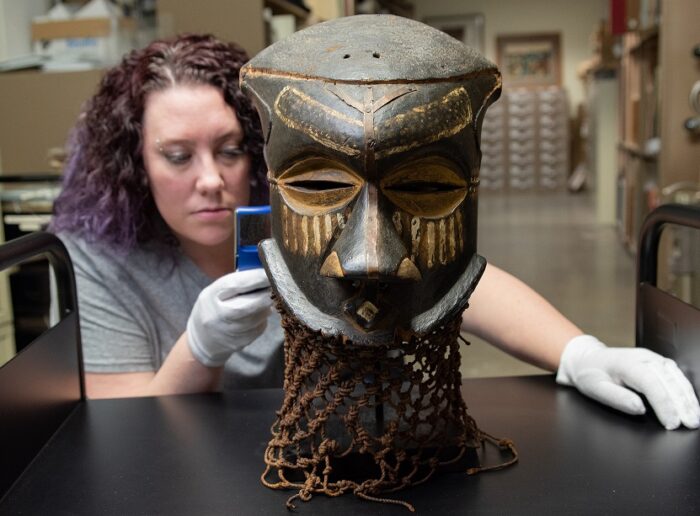
Follensbee has added a Citizenship and Service-Learning component to all of her advanced undergraduate classes where students complete educational, service-oriented research projects. The students perform in-depth research on art and artifacts loaned to the University by local museums and collections that do not have the resources or the expertise to research them. Follensbee’s Basic Conservation of Art and Artifacts class cleans, repairs, and sometimes reconstructs dirty, damaged, and broken art and artifacts. The results of the student research are shared with the lenders, who then may exhibit the works with the students’ research included in the labels and explanatory display texts.
Building the University’s Study and Research Collections
In addition to borrowing objects for students to study, Follensbee also creates opportunities for students to research art and artifacts from the University’s collections, which she has actively helped to develop. “Donated collections greatly benefit the University, because these art and artifacts are secure and can be made available on a regular basis for students to study and research. The Art History program has received some outstanding donations of art and artifacts over the past few years, including a number of fine Oceanic artworks from Randy Wimmer, several Amazonian objects from Bob Zinn, and a large collection of late 20th-century Maya textiles from donor Edie Ballweg,” says Follensbee. “Last year we received a particularly wonderful, large, museum-quality collection of African masks, African metalwork, and other non-Western art from local businessman Guy Mace.”
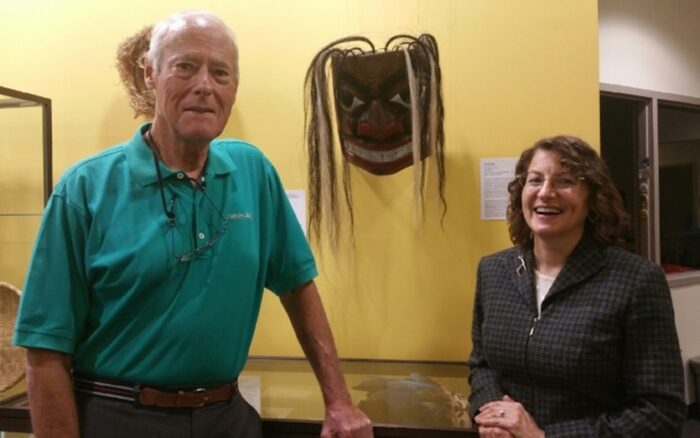
After completing their research and writing up the results in Follensbee’s advanced classes, whether on loaned or donated art and artifacts, the students also develop text for their selected object’s display. As a service to the University, to the local community, and to the lenders, the best student research is compiled, edited, and paired with the loaned and donated objects, to be featured in an annual public, professional, educational exhibit in the Special Collections and Archives gallery in Meyer Library. After the close of the exhibit, the exhibit texts are compiled into an online virtual exhibit, which further disseminates their research.” (See: https://blogs.missouristate.edu/arthistory/)
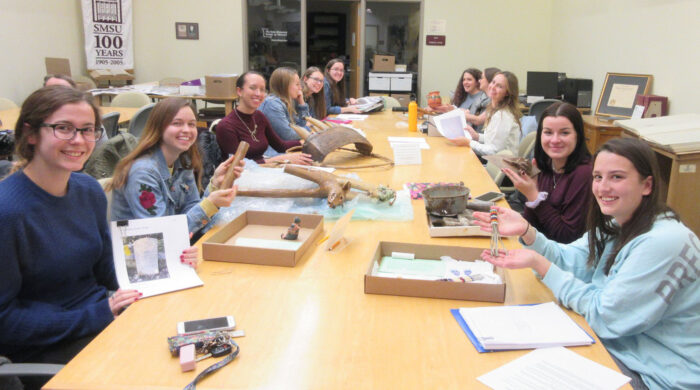
Beneficial Collaborations
Follensbee notes with gratitude that she wouldn’t be able to provide her students with these opportunities without the excellent support and collaboration of her colleagues at Missouri State. Special Collections and Archives in Meyer Library, in particular, has been instrumental in providing secure storage space for the loaned art and artifacts while also providing access to the objects and space in their reading room and lab for students to study, research, and conserve the objects that they select for their course projects. In addition, Special Collections also provides the fall semester gallery space and designs the displays for the fall exhibits.
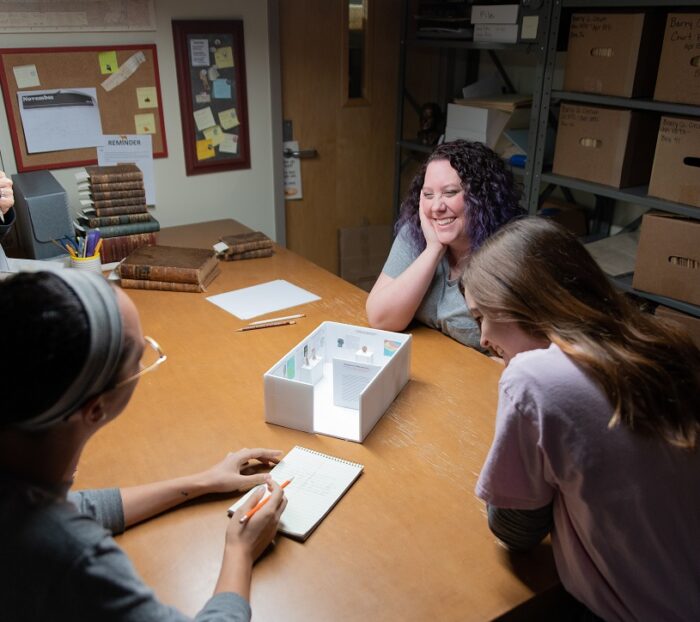
Anne Baker, Head of Special Collections and Archives, has been working with Follensbee and her students since 2005. Baker notes that while Special Collections is primarily a library research space and a gallery space, they are happy to work with Follensbee to provide these opportunities for her students to work with art and artifact collections. “I don’t know if anyone else is doing anything quite like [this collaboration],” Baker states. “It’s very rare that undergraduate students have the chance to work with things hands-on.”
Alumni from the Art History and Museum Studies programs attest that they have derived great benefit from Follensbee’s advanced class research projects, not only in learning about Art History and Museum Studies, but also in finding their own passions. Alumna Emily McClain states, “Follensbee’s Basic Conservation of Art and Artifacts course interested me, but the hands-on undergraduate research projects that I performed in the class made me want to pursue further opportunities in the same field… [Because of that class], I ultimately decided to focus on Museum Conservation.”
Macaylah Gant Hodge echoes McClain’s experience: “Prior to taking Dr. Follensbee’s courses, I was unsure of what I wanted to do after obtaining my…degree in Creative Writing and Museum Studies,” says Hodge, “However, due to the courses I took with [her], I was exposed to art history research as well as archival collections… I will always be grateful for the role [that Dr. Follensbee] played in helping me to find my place and follow my passion at Missouri State.” Both McClain and Gant Hodge have gone on to graduate programs in the Museum Studies field – McClain in Conservation and Art History at Queen’s University in Toronto, and Gant Hodge in Archival Studies at the University of Missouri-Columbia.
Providing Rich Opportunities for Students to Disseminate their Research
Follensbee’s mentorship of students does not stop when the classes end, as she encourages students to take their research even further. Follensbee collaborates with other faculty, with on-campus organizations, and with off-campus organizations to develop opportunities for students to gain experience in presenting their original research, serving as guest speakers in classes, and making presentations for campus organizations and local organizations, such as the Ozarks chapter of the Missouri Archaeological Society.
Follensbee also encourages undergraduates to expand their research and to present and publish in more formal venues. She encourages students to submit presentation proposals to Missouri State’s annual undergraduate Art History Symposium and to the Springfield-Greene County Library’s First Friday Art Talks series, as well as to develop their research as written articles to submit to LOGOS, Missouri State’s journal of undergraduate research. In several instances, Follensbee has also invited advanced students and alumni to present in symposia that she chairs at regional and national conferences such as the Midwest Art History Society and the American Society for Ethnohistory, and even to work with her as co-authors on articles in local journals such as OzarksWatch.

In addition, Follensbee has organized and chaired symposia of student presentations for state and regional conferences. Two years in a row, Follensbee has chaired a symposium at the Missouri Archaeological Society in which six to seven students made poster presentations of their research. In the fall, she and Anne Baker co-chaired a symposium of student and alumni poster presentations for the Missouri Association for Museums and Archives annual conference.
Gant Hodge strongly values the professional research and presentation experiences that Follensbee provided for her as an undergraduate, stating that Follensbee pushes her students to take what they are learning and make it their own, valuing the work and what the work represents. Gant Hodge further remarks that “[researching with Dr. Follensbee] taught me how to be a professional in [the] field, while also [maintaining my] integrity and being true to myself.”
McClain agrees with Gant Hodge that Follensbee’s mentorship is a highly positive experience: “She makes herself very available for her students to approach her with questions or to seek advice.” McClain also comments that having Follensbee’s mentorship and the experience of presenting at professional conferences were instrumental for her acceptance into the Queen’s University graduate program.
Unprecedented Opportunities for Undergraduates
While Follensbee has developed multiple opportunities for undergraduates to present and publish their own original research, a bigger challenge comes with involving students in a professor’s professional research – which Missouri State also strongly encourages. In the field of Art History, as in other fields in the humanities, collaboration in professional research is so rigorous that it is generally reserved for professional colleagues, and only sometimes involves exceptional graduate students. “It’s a serious challenge for professors to seek out ways to truly involve undergraduates in professional-level research,” Follensbee says. “The opportunities for undergraduates to collaborate with a professor on a national or international, peer-reviewed professional presentation or publication are extremely rare in my field.”
But Follensbee continues, “I am lucky, however, that my field is interdisciplinary, as that allows me to be more flexible in the type of research projects that I pursue.” Because Follensbee holds a doctorate in Art History and Archaeology, she has a wider range of options for topics of research, as well as a variety of methods from which to choose for how to conduct research.
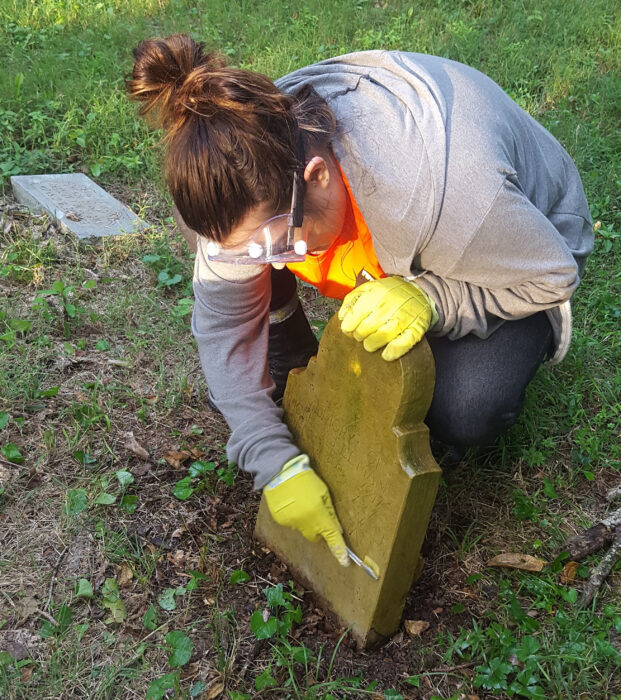
Over the past ten years, Follensbee’s professional research on ancient indigenous American cultures has incorporated a methodology called experimental archaeology, also known as replication studies. This methodology involves testing hypotheses about the purpose and meaning of ancient objects by making accurate replicas of the objects and then testing the replicas to explore–and hopefully to discover–their possible purposes. Because the objects that Follensbee had been researching are relatively simple to recreate, she recognized that experimental archaeology would be an excellent way to bring undergraduates into her professional research.
One of Follensbee’s experimental archaeology research projects, for example, involves mysterious ancient Mesoamerican artifacts known as “iron ore blocks,” and how these artifacts had variously been interpreted as everything from amulets, to money, to weights for weapons, to whistles, to objects strung together to form chain mail, to fishing net weights. After securing Faculty Research Grant funding, Follensbee hired five grant assistants to help her make and test replicas of these artifacts. After the group made over 300 accurate replicas of the iron ore blocks, she and her grant assistants tested all of the different hypotheses. The undergraduate grant assistants’ research proved so strong that Follensbee was able to eliminate all of the hypotheses but one–that the objects had most likely served as fishing net weights. As befitted the assistants’ excellent contributions, Follensbee named all five of the grant assistants as co-authors on an international conference presentation as well as on an internationally peer-reviewed chapter in a scholarly edited volume.
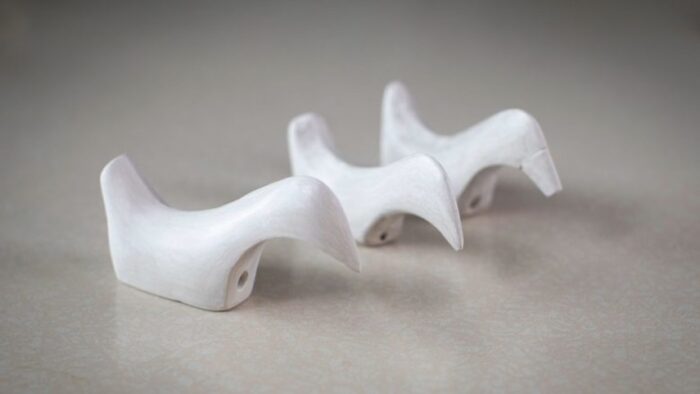
Follensbee has already started her next experimental archaeology project, which is on a group of enigmatic ancient Native American objects that are known as “birdstones.” She hired four grant assistants who helped her make replicas of a variety of birdstones, and they are currently testing the hypotheses on these objects. Meanwhile, last spring, Follensbee’s grant assistant Sarah Teel presented a preliminary report on this research at the Society for American Archaeology international conference, in a paper co-authored with Follensbee and grant assistant Leslie Dunaway.
The Benefits of Undergraduate Research
All of Follensbee’s efforts to help undergraduates develop and disseminate their research and to involve them in professional research is starting to bear fruit – and proving invaluable to the students as well.
Alumna Katie McElfresh Buford (BA Art History 2011) states that she has personally experienced the long-term benefits of presenting on her original research as an undergraduate and of being involved in professional research with Follensbee as an alumna. She is enthusiastic about the collaboration: “Dr. Follensbee is an outstanding professional. She treats students (involved in her professional research) like equals and empowers them to feel confident and makes sure they feel supported in their research.” Buford also considers the act of sharing discoveries, discussing findings, and then presenting research to have been vastly more educational than just reading about others’ research, remarking that there are academic benefits, social benefits, and personal benefits. “I learned to be confident in my findings and to connect with others in a community setting.”
Follensbee concurs that involvement in research carries many benefits: “Students who learn strong research techniques, complete advanced research projects, and disseminate their research beyond the classroom have not only developed important skills, but they have gained experience and made accomplishments that they can highlight on their resumes, which gives our students important advantages in today’s competitive world,” says Follensbee. “I’m proud to be a part of that.”|
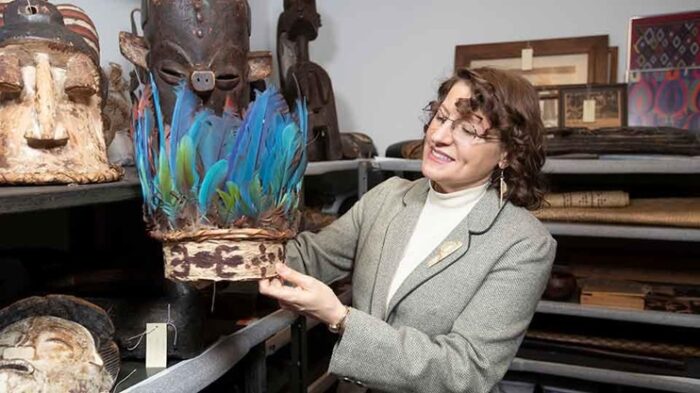
Interested in studying Art History or Museum Studies? The degree requirements can be found here in the undergraduate catalog. Or contact the Art and Design Department for more information.

Leave a Reply